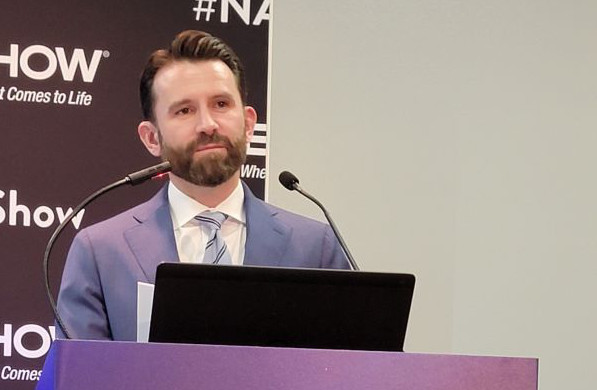After Superstorm Sandy, Broadcasters Evaluate Emergency Response
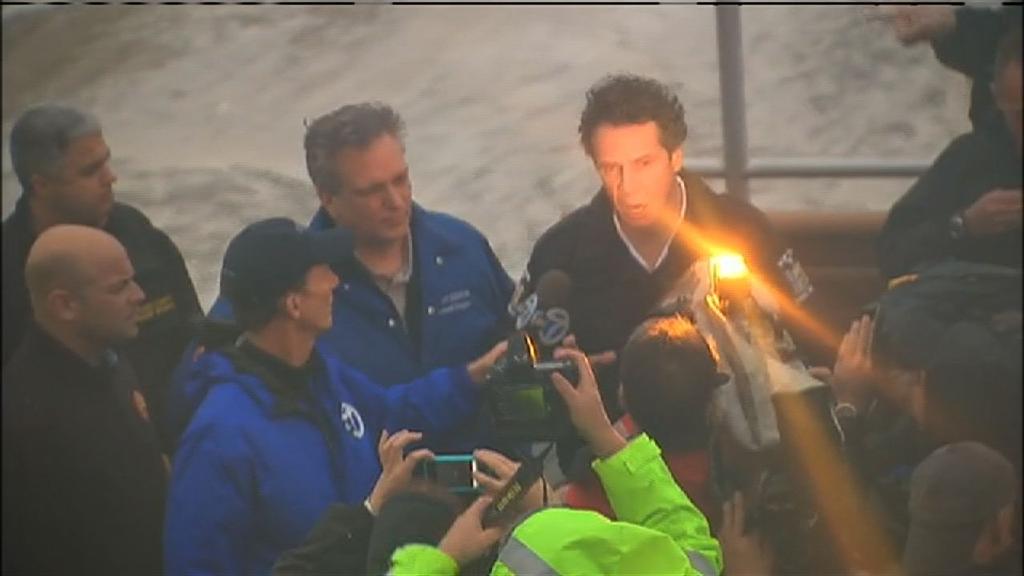
NEW YORK—It’s hard to imagine a year that offered broadcasters more chances to spread the news about bad weather than 2012. From wildfires in the west to the devastation of Superstorm Sandy in the east, TV stations kept viewers informed and, as much as possible, out of harm’s way.
Making those warnings even more readily available to all potential audiences was the topic at an NAB Show session in Las Vegas, “EAS, Superstorm Sandy and Accessible Emergency Warnings: A Discussion of Broadcasters’ Role as First Informers,” part of the show’s Broadcast Engineering Conference.
For TV stations that have struggled with mandates to provide closed captioning for live emergency alerts, there are still more challenges coming as the FCC begins implementing provisions of the Century Communications and Video Accessibility Act of 2010, or CVAA.
“The CVAA brings emergency communications to people with visual or aural disabilities,” said Alison Neplokh, chief engineer at the FCC’s Media Bureau.
Neplokh appeared by video conferencing due to the budget sequester that restricted FCC staff travel. From her office at the FCC, she told broadcasters and cable companies at the NAB Show that they need to be ready for new requirements that include closed captioning for content distributed over IP and the return of rules mandating 50 hours a week of Descriptive Video Service (DVS) content, which provides an audio track narrating on-screen action for the sight-impaired.
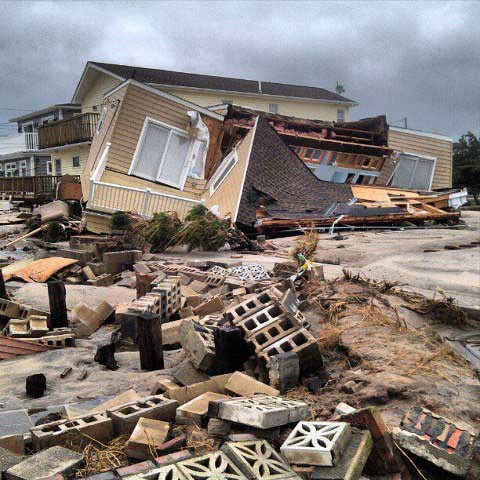
The new rules, which will take effect two years after they’re published in the Federal Register, will also require broadcasters to use SAP channels to provide audio versions of on-screen emergency warnings, either read live by a human or provided by a synthesized voice.
Neplokh’s FCC colleague Greg Cooke, associate chief of the Public Safety and Homeland Security Bureau, says the commission is still struggling with another emergency alert issue. While the requirement that cable systems override all channels of programming to carry EAS alerts was well-intentioned, Cooke says it’s had unintended, unfortunate consequences when cable viewers are unwillingly shunted from live emergency programming on a local channel over to an EAS message on a different channel.
“What we’re looking at now is the extent to which new technology can allow for selective treatment of broadcasters,” Cooke says, allowing local broadcast channels on cable to be exempted from the override requirement so that viewers can continue to watch them without interruption when a crisis hits.
Wade Witmer, deputy director at FEMA’s Integrated Public Alert and Warning System (IPAWS) Division, also appeared by video from Washington.
“We see broadcasters as very robust, one of the last communications means standing in any emergency,” Witmer said.
Broadcasters are doing a good job of incorporating IPAWS-generated alerts into their emergency communication, Witmer told attendees. But he says TV and radio stations can do a better job of cooperating with wireless carriers who now deliver emergency messages directly to customers’ phones and other handheld devices.
“I’ve heard from stations that will not talk about wireless emergency alerts on the air, because that’s the competition,” Witmer said. “But you should be educating listeners about what that ugly tone is that’s on their phones, and reminding them that when they hear those tones, they should tune to your station.”
Witmer also reminded stations to be assertive about being part of local governments’ emergency plans.
“If your station has power backup and you intend to stay on the air during disasters, that’s something your local emergency officials should know.”
Superstorm Sandy provided a real-world test of that challenge last fall, said New York State Association of Broadcasters president David Donovan.
Donovan says broadcasters had an advantage before Sandy in the form of accurate predictions of the storm’s path and timing. That allowed them to plan ahead of time for one of their biggest concerns: the availability of fuel to keep generators powered and news vehicles moving after the storm hit.
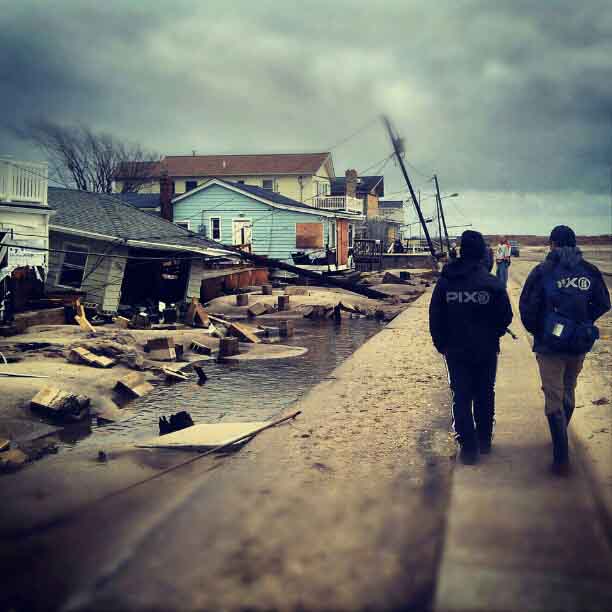
“New York City is made of islands, and when the bridges and tunnels aren’t functioning, you’re going to have problems,” Donovan said.
Indeed they did. While most of New York’s FM and TV stations sailed through the storm with the help of fully-fueled generators, “where we ran into problems was AM,” Donovan says, “because a lot of towers are in New Jersey in the flood zone, so there was some flooding that knocked out power.”
Widespread power outages also kept many of those hit hardest by the storm from watching TV, but Donovan says partnerships between TV and radio broadcasters put simulcasts of TV news coverage on powerful AM and FM signals that made them available to residents who needed them most. Those partnerships included Disney’s ESPN Radio outlet, WEPN-FM, which carried audio from Disney-owned WABC-TV.
“New York City saw a 70 percent increase in radio listenership that night,” Donovan said. “Radio was the key to keeping the people informed that night.”
Donovan says broadcasters, and especially radio broadcasters, had some big structural advantages over competing communications channels. With transmitters capable of being powered by generators even if the power grid went down, “our architecture is a wide-area architecture covering 30, 40 or 50 miles out,” he said. “We are not prone to trees destroying our system” in the same way that a wind-blown tree can take down power, phone and internet service to a neighborhood.
But the biggest problem, Donovan said, still turned out to be a fuel-related issue: getting access to gasoline for the news vehicles trying to cover the storm’s aftermath.
“The port of New York was closed, and the gas stations that still had fuel didn’t have working pumps, so getting access to federal fuel depots was critical,” Donovan recalled. Before the storm hit, FEMA had already approved access to fuel for broadcasters’ generators, but not for news trucks. That’s where a series of late-night phone calls to the FCC came in.
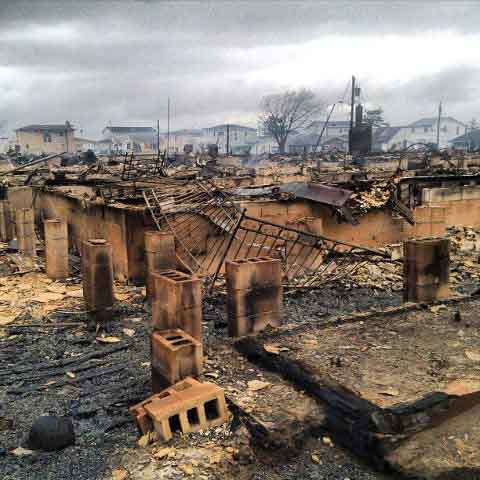
“The Commission was phenomenal,” Donovan says. “Ken Moran (chief preparedness officer at the FCC’s Homeland Safety Bureau) worked through FEMA and we were able to get approval for our news trucks. So our guys went to the depots and showed the letter, and the guy with the gun said, ‘Get out of here! Anybody can fake a letter.’”
That’s a lesson that’s been learned far from New York. Mike O’Hare from the state of Alaska’s emergency management agency was also on the panel, speaking of the importance of government cooperation with broadcasters.
“States need to recognize that broadcasters are emergency infrastructure,” he said, “and if we can’t provide fuel for you guys to broadcast and get that information out, we’re all dead in the water.”
In addition to better securing fuel availability, Donovan says one post-Sandy lesson in New York is finding more ways to communicate with broadcasters at the height of an emergency.
“For a period of time, I couldn’t reach my stations because the phone system was gone,” he says, “so we need to work out a better way of communicating with them.”
Donovan says broadcasters also must remain alert to attempts to reclaim more of their ENG spectrum for other uses.
“On a day to day basis, we do have stations that have shifted from their own ENG to bonded cellular,” he said. “But in an emergency when your phone system goes down, your bonded cellular goes down too.”
Get the TV Tech Newsletter
The professional video industry's #1 source for news, trends and product and tech information. Sign up below.
